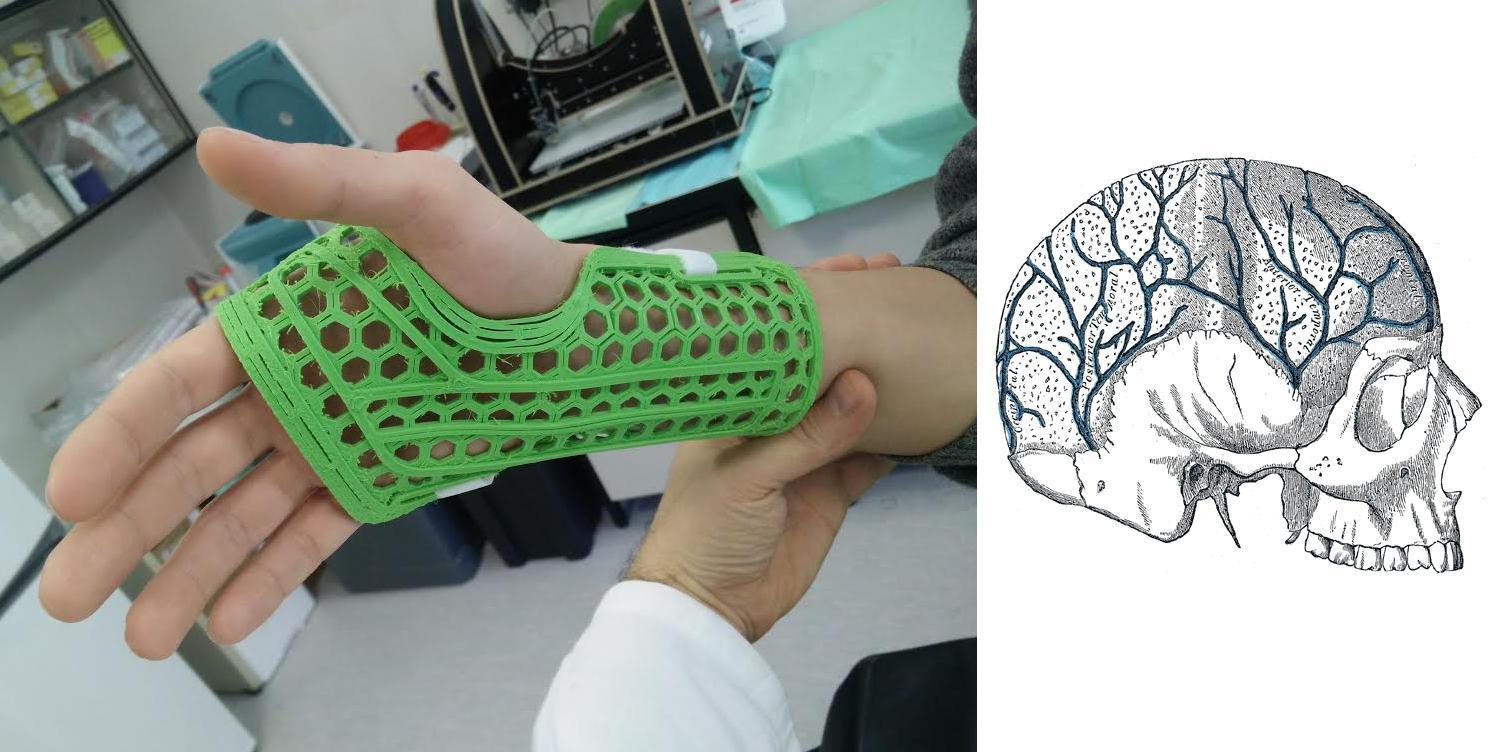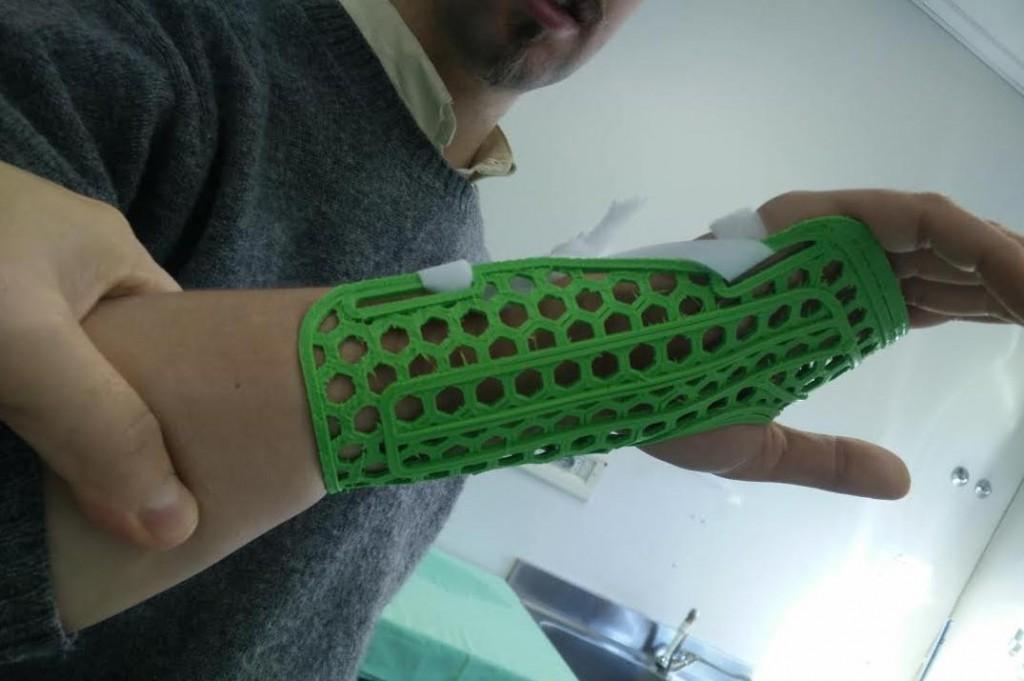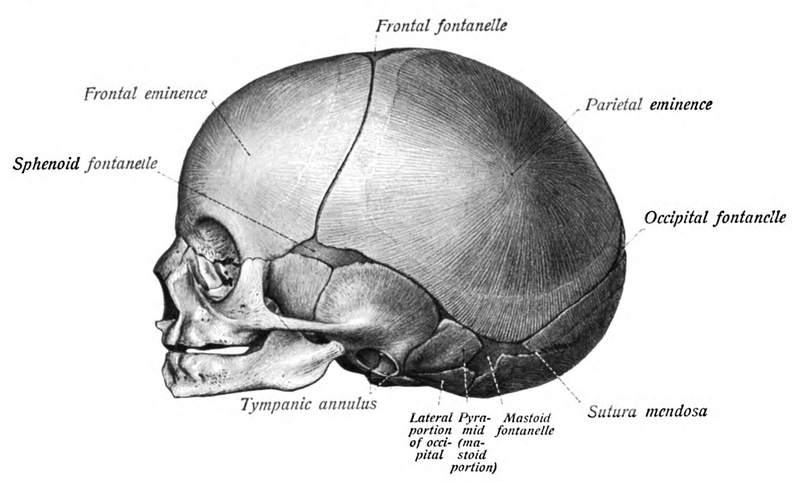 3D printing and medicine are converging at a rapid pace. It seems as though it was just a few years ago that any mention of the two together would have made most medical professionals laugh. Now we’ve seen 3D printing implemented in a multitude of different ways throughout virtually all fields of medicine.
3D printing and medicine are converging at a rapid pace. It seems as though it was just a few years ago that any mention of the two together would have made most medical professionals laugh. Now we’ve seen 3D printing implemented in a multitude of different ways throughout virtually all fields of medicine.
Today, we see the convergence continue, as the WASProject has announced that they are teaming with the Rizzoli Orthopedic Institute to bring not one, but two separate 3D printed medical innovations into reality.
 First, they will be creating what WASP refers to as “Tutors” for use by first aid centers. Tutors are basically what most of us refer to as braces and casts, used for broken bones and sprains. Secondly, and probably even more impressive, is the fact that WASP and Rizzoli are also working on creating cranial bone replacements which could be used for head trauma, and other ailments which cause a patient to lose a portion of his/her skull.
First, they will be creating what WASP refers to as “Tutors” for use by first aid centers. Tutors are basically what most of us refer to as braces and casts, used for broken bones and sprains. Secondly, and probably even more impressive, is the fact that WASP and Rizzoli are also working on creating cranial bone replacements which could be used for head trauma, and other ailments which cause a patient to lose a portion of his/her skull.
The Tutors, which can be used for sprains, contusions, and even fractured bones, will be 3D printed using the same material found on most of our desktop 3D printers — PLA.
“We’re developing 3D printers with bigger sizes and bigger nozzles,” explained WASP’s founder, Massimo Moretti. “It will be possible –- thanks to the addition of several dimensional parameters a 3D scan of the patient hand’s — to print tailored tutors in a very short time: 10-20 minutes.”
For those unfamiliar with PLA plastic, it is extruded at a temperature of 180°C, but is very malleable at just 60°C. The tutor (cast) is 3D printed flat and then it is heated up and shaped accordingly for each patient on an individual basis. It then is cooled and it maintains that very shape, providing a hard brace which can be used for a variety of ailments. The most significant part of this method is that it reduces costs up to 90% over that of traditional bandages, casts, and braces. The price goes from about 30 Euros all the way down to just 2 Euros.
At the same time, these tutors are waterproof, have large holes in them so that the wearer doesn’t perspire on them, and are completely washable in the sink, shower or tub. WASP is also looking at 3D printing condutive material onto these casts to allow electrical currents to be distributed throughout the device, creating electromagnetic fields which will greatly accelerate the healing process, in the case of fractures.
“Rizzoli’s First Aid centre staff has been indispensable for the development of this project,” WASP tells 3DPrint.com. “We needed the advice of somebody who is near patients everyday. Some revisions were made during construction of the tutors, such as the integration of three external lines that can be cut with scissors, to make the tutors adaptable to every kind of wrist. These lines are in the palm of the hand under the fingers, around the toe base and in the closure point of the forearm. The closure is made by self-adjustable strings. The ability to 3D print tailored tutors will allow us to eliminate the cut lines all together.”
 This isn’t all though. WASP and Rizzoli are also working on creating 3D printed “cranial substitutes”.
This isn’t all though. WASP and Rizzoli are also working on creating 3D printed “cranial substitutes”.
“In the case of a serious cranial trauma the surgeon is often compelled to remove the skull cap around the brain to expand the volume (and allow for the swollen brain to enough room to survive),” the director of the Rizzoli’s Cells and Musculo-skeletal tissue Bank, Pier Maria Fornasari explained. “Once the brain returns to its normal size the skull cap has to be refurbished. Until today, there were three options: re-use the original cranial bone which can be washed and disinfected; otherwise it can be used in a hydrioxopatite cranial box, it is a fragile material which forces the patient to be very careful for the rest of his life; another option is to implant a plastic cranial box which is not be absorbed into the body when it breaks down.”
Rizzoli and WASP’s 3D printed cranial implants, however, are constructed in three different layers. Two of these layers exhibit resistance and stability, while the other facilitates in the regeneration of human bone growth. This allows the 3D printed skull cap to be placed on the human head and over time, break down while real bone replaces it through an “ossification process”. While the external layer is hard and rigid like typical bone, the middle layer is made up of spongy tissue, and the internal layer again is harder and more rigid.
For the outer layer the researches plan to use something along the lines of caprolactone, which can be rigid while also being absorbed by the body. For the internal layer, they are considering the use of hydroxyapatite, which is where the bone regeneration will start from. The researchers have been in contact with several neurosurgeons in order to launch a further partnership and ultimately enter into pre-clinical and clinical trials.
“In the future, the missing part of the cranial box will be directly printed in the operation room,” WASP tells us. “The social impact of a project like this is huge. The prostheses that are used today cost thousands of euros and one day it will be possible to produce them just with one hundred euros. It will be possible to operate not only in conventional hospitals but in war zones as well, where these kinds of problems are a daily issue.”
It should be interesting to see how quickly the cranial implants are brought into reality, and just how many hospitals and doctors begin reverting to 3D printed tutors (casts) like these in the near future. What do you think about what WASP and Rizzoli are doing? Will these two projects change medicine for good? Discuss in the 3D Printed Tutors and Cranial Implants forum thread on 3DPB.com.
Subscribe to Our Email Newsletter
Stay up-to-date on all the latest news from the 3D printing industry and receive information and offers from third party vendors.
You May Also Like
Gorilla Sports GE’s First 3D Printed Titanium Cast
How do you help a gorilla with a broken arm? Sounds like the start of a bad joke a zookeeper might tell, but it’s an actual dilemma recently faced by...
Nylon 3D Printed Parts Made More Functional with Coatings & Colors
Parts 3D printed from polyamide (PA, Nylon) 12 using powder bed fusion (PBF) are a mainstay in the additive manufacturing (AM) industry. While post-finishing processes have improved the porosity of...
$25M to Back Sintavia’s Largest Expansion of Metal 3D Printing Capacity Since 2019
Sintavia, the digital manufacturing company specializing in mission-critical parts for strategic sectors, announced a $25 million investment to increase its production capacity, the largest expansion to its operations since 2019....
Velo3D Initiates Public Offering in a Bid to Strengthen Financial Foundations and Drive Future Growth
Velo3D (NYSE: VLD) has been among a number of publicly traded 3D printing firms that have attempted to weather the current macroeconomic climate. After posting a challenging financial report for 2023,...































